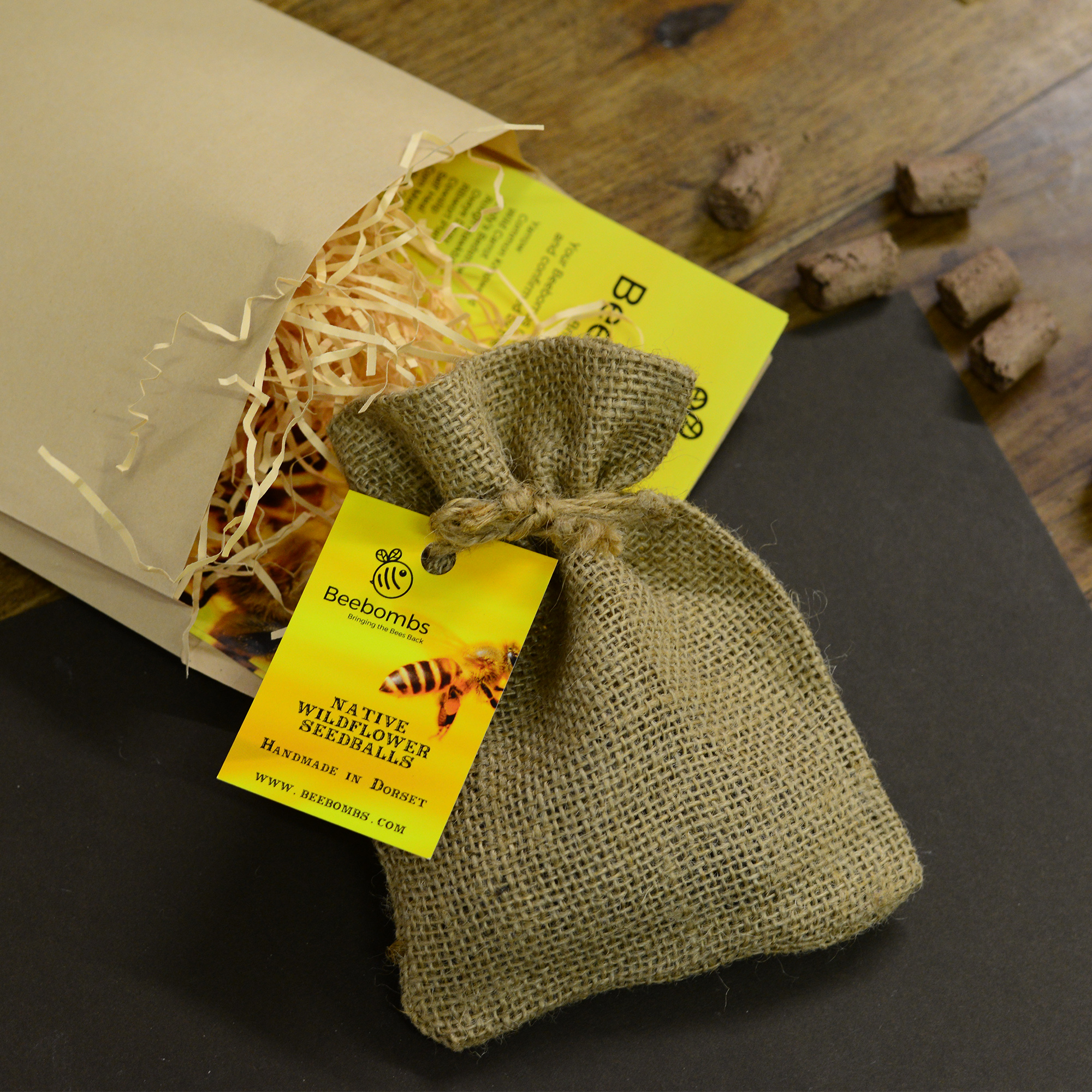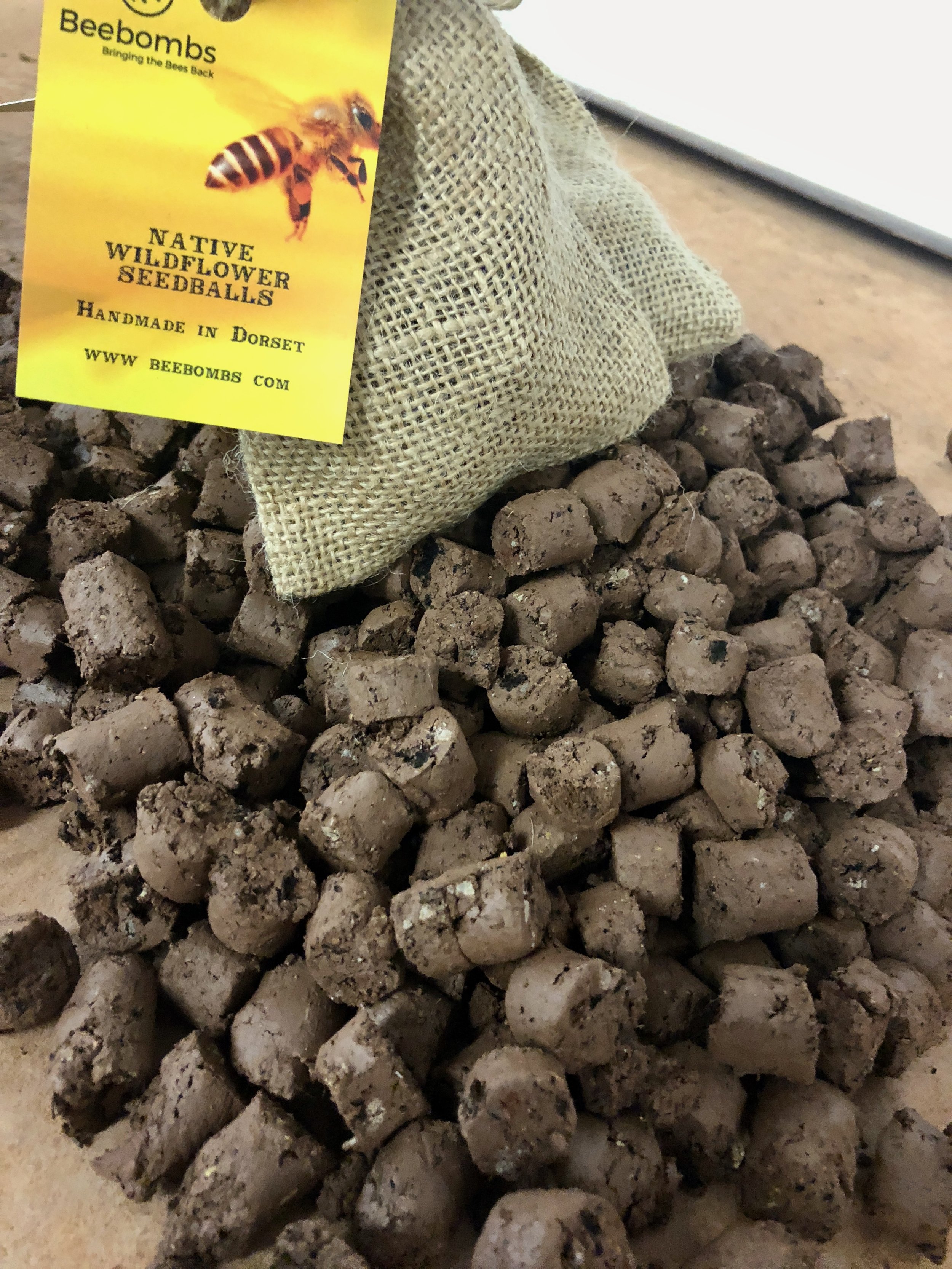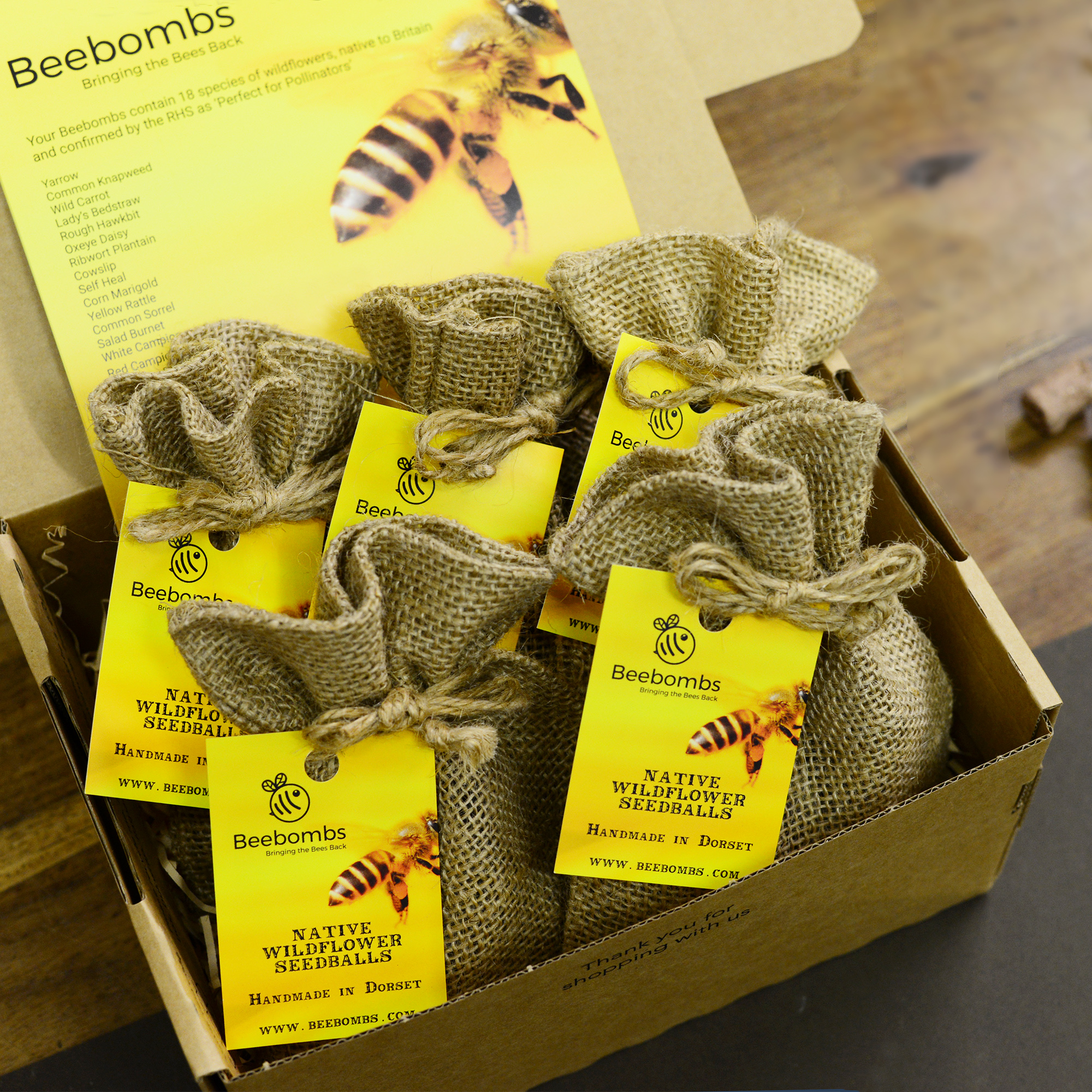1 pack of Native Wildflower Beebombs






1 pack of Native Wildflower Beebombs
1 pack of handmade, native wildflower Beebombs. 1000s of seeds from 18 native wildflower species, mixed with local protective clay and sifted, nurturing top soil. 1 pack provides coverage for roughly 21 sq ft / 2m² of wildflower meadow.
NOW WITH INCREASED ANNUALS - Beebombs are a mix of annuals and perennial species, providing natural and diverse habitat. As requested by many of you, we have increased the volume of annual seed - giving you more poppies, cornflower, marigolds etc - to ensure a beautiful patch that also supports our pollinators!
Using seedballs protects the seeds from predators and provides a nurturing environment for the seeds to germinate from, making it easier for you to create the wildflower habitat Britain needs.
We use no plastic in our packaging or process and make your Beebombs in a sustainable way on a farm in Parley, Dorset.
Free tracked postage and packing on all orders over £15. Dispatched same or next day via Royal Mail Tracked 48 service, to anywhere in the UK.
Beebomb Seeds:
Yarrow is a common flower of roadsides, hedgerows, grasslands, and scrubby areas where the soil is inclined to being dry and chalky. It is one the perennials in our mix, flowering from June to September #bringthebeesback
Common Knapweed is a really tough wildflower that can grow in a range of soils. It is a real favourite of our pollinating insect friends and looks beautiful too. It is one of our perennials and usually flowers from July to September #bringthebeesback
Wild Carrot offers a flat, white blossom with a red spot in the centre. The white root smells like carrot and has a range of medicinal uses! It will flower in its second year from June to August #bringthebeesback
Lady's bedstraw was historically widespread through Great Britain and is a very important pollinator. Its beautiful yellow flowers provide a scent of honey to our countryside from June to September. Lady’s Bedstraw is one the annuals from our mix and will help #bringthebeesback
Rough Hawkbit is on the Royal Horticultural Society's list as 'Perfect for Pollinators'. It is one of the perennials from our mix. Flowering from June, right through to early autumn, Rough Hawkbit will help bring #bringthebeesback
Oxeye Daisy is a beautiful and recognisable pollinator and is one of our perennials. One for the children and one for the bees it flowers from June to September. Oxeye Daisy will certainly help to #bringthebeesback
Ribwort Plantain can be found all over Britain's grasslands and is well adapted to all soils. It is one of our perennials and flowers from April to October. Ribwort Plantain is a great pollinator's friend and will help #bringthebeesback
Cowslip provides a beautiful drooping yellow flower and is a big friend of a range of wildlife. It usually flowers from April to May and is a perennial. Cowslip is on the Royal Horticultural Society's list of perfect for pollinators and will help #bringthebeesback
Selfheal is a common herb in Britain and has a long use of historical, medicinal uses. Selfheal is on the Royal Horticultural Society's 'Perfect for Pollinators' list. It is one of our perennials and usually flowers from June to August #bringthebeesback
Corn Marigold is native to the UK since at least the Iron age and provides a wonderful flash of bright yellow to your wildflower meadow. It is one of the annuals in our mix and will flower from June to October. Corn Marigold is perfect for pollinators #bringthebeesback
Yellow Rattle is a bee and butterfly friendly British Wildflower that is on the Royal Horticultural Society's list as 'Perfect for Pollinators'. It is one of the annuals from our mix. Yellow Rattle will be flowering from May to August so it's a big help to #bringthebeesback
Common Sorrel is not specifically included as a bee attractor but adds to a good wildflower meadow. It attracts butterflies! This flower usually comes in the second year as it is a perennial and flowers from May to June #bringthebeesback
Salad Burnet is a great friend of the butterfly and the bee. It can also help in the kitchen bring many a dish to life as a locally sourced herb flavouring. Salad Burnet is one of the perennials in our mix and usually flowers from May to September #bringthebeesback
White Campion is a fantastic addition to any wildflower meadow. It’s delicate flowers provide food for lots of pollinators! It will flower in its second year from May to September. White Campion can be found our Beebomb mix and will help #bringthebeesback.
Red Campion’s brilliant pink flowers are beautiful and great for pollinators. Red Campion is one of our annuals and has a long flowering period usually from April to August! It can grow in semi-shade and will certainly help us #bringthebeesback
The Common Poppy is a beautiful and iconic flower. Native to these shores and invaluable to bees, butterflies and a range of other pollinators, it will provide a beautiful look to your wildflower garden. The Poppy is an annual and flowers from June to September #bringthebeesback
The Cornflower is a beautiful but endangered member of the Beebomb mix. It's certainly Perfect for Pollinators and will add it's deep blue beauty to your wildflower patch. The Cornflower is one of our annuals and flower from May to October. It will help #bringbackthebees
The Corn Chamomile is part of the daisy and dandelion family and is very much Perfect for Pollinators. The flower is distinctly and agreeably aromatic, smelling clearly of apples. It is one of our perennials and flowers from June to August #bringthebeesback



























